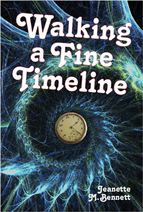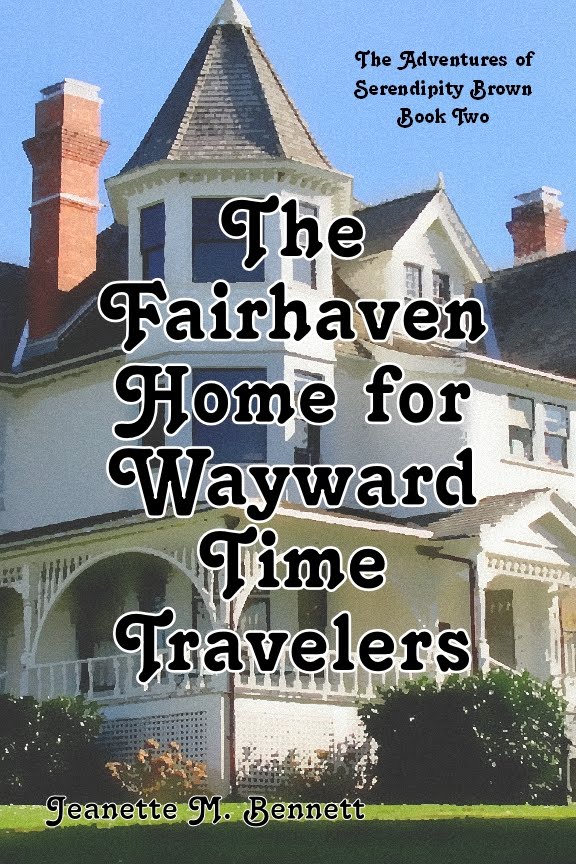30 April 1860 - Florida Everglades
Temporal Biologists are a bit too obsessed with their job to be very good company. Dr. Lily Pinehurst, however, is the worst I have ever worked with.
She doesn’t like me to get too close, which in our cramped quarters is very difficult. I must be three feet away from her at all times. If I get any closer, she starts hissing at me not to touch her. So I back up and try to stay as far away as possible.
I’ve tried to start conversations with her, but she either ignores me or shushes me. She won’t speak to me unless she has to and then it sounds like an order. She talks to her orchids, but not to me. I get the distinct feeling she does not want me around at all, except as a slave to punt her about the swamp.

Today Pinehurst found a patch of ground with trees she wanted to explore. We have found quite a few orchids growing on trees. They attach themselves and then dangle their spongy roots to collect dew and rain water. I stayed with the punt, knowing I wasn’t wanted.
I was reading some files in my pocket computer when I heard a blood curdling scream. I sprang up and hurried to the source, climbing over logs and roots. I found Lily standing there looking terrified.
“What’s wrong?” I asked.
“I can’t move my feet. Make the ground let go!”
I looked down at her feet, ankle deep in the mud. Quicksand! If I went to her, I would probably be trapped, too. I had to think fast.
“Wait here!” I yelled. As I rushed off I realized that was a stupid thing to say to someone who couldn’t move.
I got back to the punt and grabbed it up. It’s light enough I can move it but with some difficulty. Now it seemed half its normal weight. Thank heavens for adrenaline.
I got back, laid the punt down and pushed it toward her. “Climb on!”
She grabbed the edge of the punt, and looked like she was trying to pull herself out. “I can’t. I’m stuck.”
I crawled onto the punt and out to her. “I’ll pull you out, Dr. Pinehurst.”
“Don’t touch me!”
“Dr. Pinehurst, I have to touch you to pull you out. I don’t have a choice. We have to get you out or you will get sucked in and suffocate, or at the very least, you’ll be trapped until you starve to death or something comes along and eats you.”
She looked at me big-eyed, like she was trying decide if that was worse than being touched.
I grabbed her under the arms and pulled. She pulled on the side of the punt, too. The whole time she kept whimpering, “No. No. No.” Despite her protests she didn’t try fighting me off.
I got her into the punt and automatically reached out to pat her arm. “There, there. You are safe now.”
“Don’t touch me!” Her voice sounded more scared than angry.
“I do beg your pardon, Dr. Pinehurst. I did not mean to seem too forward.” I looked around, deciding our next move. “Come on. Crawl out the back of the punt, away from the quicksand. We’ll take the boat back to the water and get back to camp. I’m sure you want to get cleaned up.”
Dr. Pinehurst nodded and meekly followed my instructions.
Back at camp I waited outside of the time machine that also served as our shelter. There are no hotels out here after all. Dr. Pinehurst came out looking shaken by her ordeal. She sat down on one of the campstools made of canvas and wood. They were period, so we could have them outside. I don’t know how old the design is, but I do know George Washington used them.
“Would you like some tea?”
She wrinkled her nose. “Don‘t like tea. Tastes nasty.”
I sat down in the other campstool. “Dr. Pinehurst, I am getting the feeling something more is going on here than you just not liking me. I was trying to pull you to safety and you didn’t want me to touch you? That makes no sense at all. Under those circumstances I would let my worse enemy touch me.”
She hung her head. “I can’t tell.”
“Tell me what?”
“Mother said if I told people I would never get a job anywhere.”
“You can tell me. Besides, I doubt Kew Gardens would want to get rid of you. Director Sherwood was going on and on about what an excellent botanist you are.”
“I’m not normal.”
“My dear, I run around the 27th century in a frockcoat with a Victorian accent. I’m not exactly normal myself.”
She snorted. It took me a moment to realize that was a laugh.
I searched my memory for what might be wrong. Then it hit me. “Do you have Bartley’s Syndrome?”
She hung her head. “Yes.”
Now everything made sense. It seems as soon as you cure one disease, more pop up. We aren’t sure if Bartley’s Syndrome is new, or it was just misdiagnosed as Autism or something else. It is something you are born with. Treatment as a child can lessen the symptoms, but it can’t be cured.
People with Bartley’s Syndrome can’t stand to be touched. They have a hard time connecting with people. They are insensitive, because they lack the ability to sense the feelings of others or to read body language. There social skills are hopelessly inadequate. On the plus side, they are seldom violent, except in self defense, and are often brilliant.
“Bartley’s Syndrome is nothing to be ashamed of. I wished you could have told me. I thought you hated me.”
She looked up confused. “Why did you think I hated you?”
I didn’t know how to answer that. She honestly did not see her behavior toward me as unfriendly. “Because normal people don’t talk to someone or want them near them if they don’t like them. However, I see now it wasn’t personal.”
“If I didn’t like you I would say I didn’t like you. You’ve been very nice. You haven’t yelled at me or told me off because I did something you didn’t like. I hate that, because I never know what I did wrong. I like you.”
It’s said people with Bartley’s Syndrome can never truly love or hate. Tolerating someone is the best they can aspire to. I had been given high praise indeed.
“And now that I understand what is going on, I like you, too, Dr. Pinehurst.”
“You can call me Lily, if you want. Friends call each other by their first names, don’t they?”
“Yes, and you can call me Wendell.”
“Okay, Wendell. Get up, I need more orchids. Hurry up before it gets dark.” She got up and headed toward the boat.
Politeness was a concept she could never understand. Now that I knew what her problem was, I found it more amusing than irritating.
“I’m right behind you, Lily.”
Now I saw why she had become a botanist. Plants can’t get offended.





















































